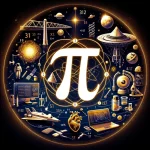Have you ever looked up at the night sky and felt a sense of wonder? Stars have long been a symbol of mystery and beauty, guiding explorers and inspiring dreamers. But what if I told you that Stars-923, a celestial body discovered recently, holds the key to unraveling some of the universe’s deepest secrets? Whether you’re an astronomy geek or just someone who loves the cosmos, buckle up—this journey into the unknown will take you closer to the stars than you’ve ever imagined!
What is Stars-923?
Stars-923 is not just another twinkling light in the sky. It is a recently discovered star system, located about 300 light-years away from Earth in the constellation Orion. This star system has grabbed the attention of astronomers and space enthusiasts alike due to its unique characteristics and potential for groundbreaking discoveries.
A Star with a Unique Glow
What makes Stars-923 stand out is its unusual glow. Unlike many other stars, which emit a steady and predictable light,has an irregular flicker. This has led scientists to believe that there may be some celestial phenomena at work, like orbiting objects or cosmic dust clouds, influencing its brightness.
The Discovery of Stars-923
The discovery of Stars-923 was made using advanced telescopes equipped with high-precision imaging. Initially mistaken for a distant planet, further analysis revealed that it was, in fact, a star system with at least two companion stars orbiting the main one.
How Was It Spotted?
Astronomers used a method called “transit photometry,” which detects small dips in a star’s brightness as objects pass in front of it. When they saw the unusual flicker , they knew something special was happening.
Why is Stars-923 Important?
Stars-923 has become a focal point for researchers due to its potential to reveal more about how star systems form and evolve. It also offers insights into the behavior of stars that are close to the end of their lifecycle.
A Window into Stellar Evolution
Stars, like everything else in the universe, go through stages. From young, bright stars to older, cooler ones, each stage tells a part of the cosmic story appears to be in a transitional phase, which means studying it could provide valuable data about the lifecycle of stars.
Possibility of Exoplanets
There’s a tantalizing possibility that may have planets orbiting around it. If confirmed, these exoplanets could offer an exciting opportunity to study planetary systems that might be vastly different from our own solar system.
What Makes Stars-923 Different from Other Stars?
Stars-923 is not like your average star. In addition to its irregular brightness, it has a unique chemical composition. Its surface shows signs of rare elements like lithium and beryllium, which are usually destroyed in the later stages of a star’s life. This has led researchers to question how these elements are still present.
Unusual Chemical Makeup
Most stars burn through their lighter elements early in their lives, but seems to have held onto them. This anomaly has puzzled scientists and opened up new lines of inquiry into stellar nucleosynthesis—the process by which stars create elements.
Magnetic Activity and Solar Flares
Another intriguing feature is its high level of magnetic activity. The star produces frequent and intense solar flares, far more powerful than those seen on our sun. This has implications for any potential planets that may orbit it, as such flares could make these worlds inhospitable to life as we know it.
The Mystery of Stars-923’s Orbiting Companions
Stars-923 doesn’t sit alone in the cosmos. It has at least two smaller companion stars that orbit around it. The interaction between these stars adds another layer of complexity to the system. The gravitational forces at play could create chaotic orbits, which may explain some of the irregularities observed in brightness.
Binary or Ternary System?
Some astronomers believe that could be part of a ternary star system, meaning three stars are gravitationally bound together. This is relatively rare and adds to the allure of studying this particular star.
The Search for Life Around Stars-923
With all the excitement surrounding, one big question remains: Could there be life? While the intense solar flares and chaotic environment might make life as we know it unlikely, scientists aren’t ruling anything out. The discovery of microbial life in extreme environments on Earth has shown that life can survive in the most unexpected places.
Potential for Habitability
Even though the odds are slim, the possibility of habitable exoplanets around can’t be completely dismissed. If planets exist in a stable orbit within the “Goldilocks zone”—the region where conditions might be just right for liquid water—they could potentially harbor life.
Technological Advancements in Observing Stars-923
The discovery and study would not have been possible without cutting-edge technology. High-resolution telescopes, combined with data from space probes and satellite missions, have allowed scientists to gather more detailed information about the star system.
The Role of AI in Space Exploration
Artificial intelligence has played a crucial role in analyzing the massive amounts of data collected from Stars-923. AI algorithms are used to sift through the noise and pinpoint significant patterns, helping astronomers make sense of complex datasets.
Future Missions to Explore Stars-923
Several space agencies, including NASA and the European Space Agency (ESA), are planning missions that could take us closer to understanding, Probes equipped with advanced spectrometers and imaging tools will be sent to gather more detailed data.
The Promise of Interstellar Travel
While we’re still far from achieving interstellar travel, Stars-923 could serve as a prime target for future missions. If we ever develop the technology to send spacecraft beyond our solar system, could be one of the first destinations.
What Stars-923 Tells Us About the Universe
Stars-923 is more than just an object of curiosity. It holds vital clues about the workings of the universe. By studying it, scientists hope to learn more about the formation of stars, the existence of exoplanets, and the fundamental forces that govern cosmic behavior.
Conclusion
Stars-923 is a cosmic enigma that has captured the imagination of both scientists and space enthusiasts alike. Its unusual brightness, chemical composition, and the potential for orbiting exoplanets make it a focal point for ongoing research. While we are still in the early stages of understanding this unique star system, the discoveries it yields could shape the future of space exploration and deepen our knowledge of the universe.
FAQs
1. What makes Stars-923 different from other stars?
Stars-923 has an unusual flickering pattern, unique chemical composition, and intense solar flares, setting it apart from typical stars.
2. Can Stars-923 support life?
While the chaotic environment around Stars-923 might make it unlikely for life to exist, the possibility of habitable exoplanets cannot be entirely ruled out.
3. How was Stars-923 discovered?
Stars-923 was discovered using transit photometry, a method that detects small dips in a star’s brightness as objects pass in front of it.
4. What is the significance of Stars-923’s companion stars?
Stars-923 is part of a multi-star system, possibly a ternary system, which makes its gravitational dynamics and brightness variations particularly intriguing.
5. Will we ever visit Stars-923?
Though interstellar travel is currently out of reach, Stars-923 remains a prime candidate for future exploration as technology advances.










